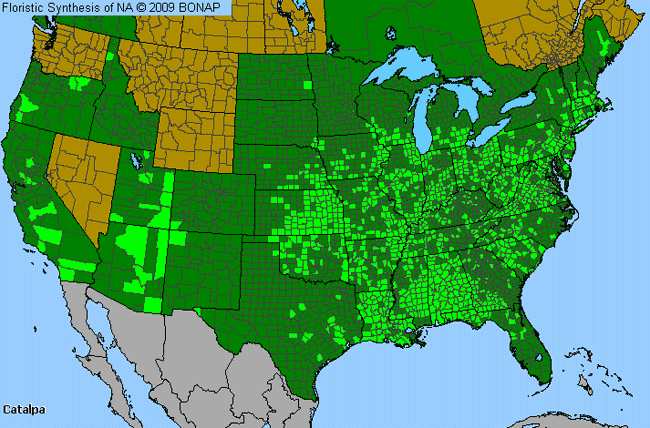Catalpa (Catalpa)

Catalpa Genus Details

A catalpa or cigar tree has leaves that are generally between 10-12 inches long and are heart-shaped. The trees have a coarse appearance and can grow 30 to 90 feet tall depending on the species and climate. The numerous white, tubular flowers have purple and yellow markings and appear after the leaves are fully developed. Although animals are the primary pollinators for the tree, the numerous, showy flower clusters may shed pollen and become airborne within 150 feet of the tree. Two native species found in the eastern U.S. flower in May thru June and during March in south central states. The tree produces a brown seed capsule, which can be 9-20 inches long.
Catalpa Allergy Info

Spring pollinosis was reported from residents of a Virginia community where these trees were numerous. Broader U.S. reports are not common, however.
Catalpa Pollen Description

Grains are united in tetrads and inaperturate. The sexine is about 1.5 micrometers thick and areolate.
The tetrad is generally 48-56 micrometers in diameter.
Species in This Genus

Allergenicity Legend:
 Mild Allergen |
Mild Allergen |
 Moderate Allergen |
Moderate Allergen |
 Severe Allergen |
Severe Allergen |
 Allergy Test Available
Allergy Test Available
Catalpa (Catalpa) is a genus of the BIGNONIACEAE family.
This genus includes the following allergenic species:
This genus includes the following allergenic species:












